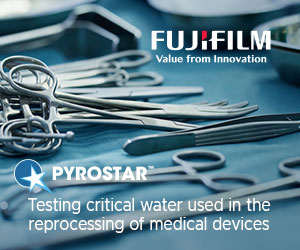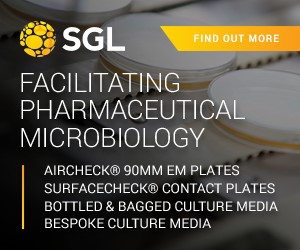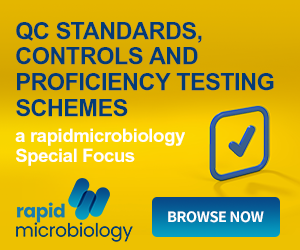Strengthening Efforts to Reduce Salmonella - in the Poultry Production Chain
| Salmonella contamination in food continues to be a major focus for food safety programmes. The European Union (EU) is increasingly zeroing in on its prevention and elimination. New legislation has been built on member states´ baseline studies of several meat and egg production systems: broilers, turkeys, laying hens, and breeders for these poultry types. Meanwhile, baseline studies examining pork, veal and animal feed have been carried out or are in progress. For egg-laying flocks an obligatory monitoring and enforcement system has already been adopted. If, during testing, eggs are found to have been contaminated with S. enteritidis or S. typhimurium - the two serotypes people are most likely to sicken from - they must be diverted from the table egg market and sent to the processing industry. There they will undergo pasteurisation to eliminate contamination. From the 1st of January 2011, legislation will also require fresh poultry meat to be free of all Salmonella serotypes. At the time of writing, it remains unclear if this regulation be fully implemented straight away. It is possible that industry lobbying has delayed this outcome. If not, it is likely that S. enteritidis and S. typhimurium will be again targeted first. But we expect the sale of raw meat containing other serotypes to be outlawed soon as well. Contaminated flocks have to be diverted to further processing, including a pasteurization treatment. This will have considerable financial consequences for the parties involved. Broiler-breeder flocks are to be monitored, as well. Where S. enteritidis and S. typhimurium are found, the EU will provide assistance to member states to eliminate contaminated flocks. Additional assistance will be given for the three other serotypes covered by the legislation (S. virchow, S. hadar and S. infantis), that show a high incidence in the baseline survey and that occur in human salmonellosis outbreaks. Huge impact The measures will have a huge impact on the EU poultry industry, more in some member states than others. It will also cover those who import broiler meat into the EU. A spokesman for the Association of Poultry Processors and Poultry Trade in the EU countries (AVEC) could not put a price on Salmonella 'zero tolerance' but said it would be 'devastating' for the industry, costing billions of Euros. He pointed out that cases of Salmonella in poultry had, anyway, been steadily falling. This is at least partially due to investment which meets Regulation 2160/2003, setting targets on the reduction of five serotypes over an 84-month timetable ending this year. The new legislation has been designed to replace this. The writing is on the wall The industry may complain about the costs of attempting to remove all Salmonella from the food chain, but its effects cost around seven billion Euros to fix worldwide. Salmonellosis is still one of the most common food-borne diseases, causing stomach pains, vomiting, diarrhoea and fever and leads to thousands of hospitalisations and many deaths a year, particularly among the young, the frail and elderly. We believe the EU is accordingly serious in its eradication efforts and expect industry has only bought itself some time. 'Zero tolerance' will be introduced, but on a rolling basis. It is clear that the onus is on poultry integrators and farmers to seek out and eradicate Salmonella at source. Poultry producers may take some comfort in the fact that they are not alone: the EU is expected to introduce similar measures to deal with Salmonella in other food from animals such as turkey, pork, beef and fish. A difficult and costly problem Eradication of Salmonella in poultry is a difficult proposition, since Salmonella contamination can take place anywhere in the food chain; in hatcheries; on farms and in rearing units, in feed-processing factories or the feed itself. But the cost of getting it wrong does not just lie in punitive European legislation. Take an example from a sister industry. In 2007, ConAgra, producer of Peter Pan Peanut Butter took a $66m hit after it recalled a product linked to over 625 cases of poisoning and five deaths over 47 of the United States. In August, half a billion eggs from farms in Iowa were recalled after over 1,300 people were made sick through Salmonella contamination. The action by Wright Egg Farms and Hillandale Farms is thought to be the largest-ever recall of its type. PremiTest Salmonella In 2007, DSM made identification of the contamination source considerably easier when we introduced the breakthrough product, PremiTest Salmonella. This enabled the rapid identification of up to 100 different serotypes. The new test exploited DNA-differences between the Salmonella serotypes to identify the serotype with a set of specific markers. It used routine PCR technology combined with detection of the PCR products on a micro-array to match the efforts of classical stereotyping such as the Kaufmann White Scheme. The difference was ease and speed: Previously, samples had to be sent to external laboratories for processing by specialists. Customers had to wait up to weeks or even months for the results. Now, the testing could be done in most microbiological laboratories and the results were available within a day. The test was relatively simple to carry out following a couple of days' training. By speedily identifying the serotype, integrators were now able to immediately trace their Salmonella problem back through the supply chain and find the weak link. This could be in the hatchery, in the breeder flock, the feed mill, the grow-out farm or the processing plant. When uncovered, companies could work to eliminate the contamination - or at least limit its damage. These days, PremiTest Salmonella is well on the way to becoming AOAC and OIE certified. Identification is vital... Due to the highly specific nature of the EU's revised legislation, the importance of being able to tag particular serotypes quickly and easily becomes more urgent. Identifying the specific strain with a minimum of fuss is useful in other ways since different serotypes often come into the food chain at specific points. Salmonella contamination often arrives with the hatching eggs and then with the day old chickens. But the feed, environment, or the previous flock may be the source of a contamination. Because of this uncertainty, it is very important to rapidly trace the source of contamination when putting a Salmonella control program in place. It makes genotyping with PremiTest Salmonella an indispensable tool. ...but so is a regime... However, despite the advantages better testing and monitoring provides, only a properly-followed programme can truly reduce the incidence of Salmonella. Preventative measures such as cleaning and disinfection regimes, vaccination (currently only possible for S. enteritidis and S. typhimurium), pro-biotic or eubiotic treatments (such as DSM's Crina Poultry Plus) or acidized drinking water or palletised feeds must be strictly followed. Separation and canalisation of contaminated breeder houses from others on the same farm and strict cleaning and canalisation in processing plants is vital. ...and it works. On the plus side, the benefits of a meticulously-planned and followed treatment campaign are clear and rewarding. Over a period of a few years, pioneering food technologist, Jaap Obdam, managed to reduce the incidence of Salmonella on the premises of a Dutch integrator to less than 0.1%. A similar program followed at a national level in the Netherlands has led to the incidence of S. enteritidis and S. typhimurium falling to well below 1% and a drop in overall contamination from 35% to 6%. The DSM PremiChain advantage These past successes are what led us to launch the DSM-PremiChain, a full-service consultancy which Jaap now leads. This business model is a first for DSM Nutrition. PremiChain offers integrators Jaap’s services for three days, a two-day training on fast-serotyping for staff in the laboratory and a tailored monitoring and analytical programme to reduce Salmonella. Using an integrator's Salmonella database, Jaap targets the farmers, the hatcheries, feedmills, or even the processing facilities, which have had a particular problem with Salmonella. When there, the critical points of transmission will be identified and addressed with measures to eliminate the contaminating source. Years of hands-on experience have given him the ability to identify dozens of often-overlooked places where Salmonella might lurk, whether in pallet coolers, hatchery down, feed pans or chicken box liners ... or elsewhere. Following the inspection, Jaap and the team will produce spreadsheets detailing exactly how to maintain hygiene within the farm and carry out a cleaning and disinfection treatment regime, and/or suggesting food additives that can protect the gut against colonisation of a Salmonella challenge. By employing PremiChain, we are confident that we can reduce the incidence of Salmonella rapidly by between 70-90% in three years achieving 'Salmonella Zero' in due course. The introduction of PremiTest Salmonella was a huge advance in the fight against this difficult and stubborn problem, but it is just one weapon in the poultry producer's arsenal. The DSM team is well-placed to help you to use our product more efficiently as tough EU anti-Salmonella legislation tightens its grip on the poultry industry and other agricultural industries come increasingly under its control. This article has been prepared for rapidmicrobiology.com by Francoise de Goeijen, Business Manager at DSM Nutrition, contact details are at the top of this page. |
NOTE: This item is from our 'historic' database and may contain information which is not up to date.
Source : DSM Premitest View archived contact details
Posted on December 9, 2010






